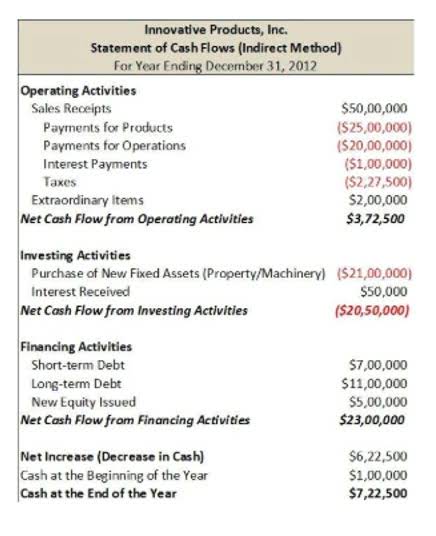
To calculate a mixed cost, one must first determine the fixed and variable components and add them together. 3rd – Now that you have calculated the variable cost per unit using the formula above, use the formula below to determine the fixed portion of the cost. How must we change the mixed cost formula to use it for annual planning?
12: Mixed Costs
On top of that, your costs go up or down depending on how much you use. But materials to make each product are your variable costs because these will vary based on how many items you’re making. Companies view fixed costs as important figures on their balance sheets because they are key indicators of financial health. A firm with high fixed costs might struggle during slow periods because those bills must be paid regardless of income levels. The commission, on the other hand, acts more like a variable cost because it’s based on the productivity of the employee.
- This means semi-variable costs are fixed for a range of activity and may change beyond that for different activity levels.
- They also get clear on how changing sales or production levels affect overall expenses, leading to smarter moves for growth and savings.
- As far as fixed costs are concerned, it cannot be seen that they do not change with the level of output at which the company is operating.
- R is the variable charge per kilometer for distance and D represents distance in kilometers.
- Like, there could be a situation when there is no production activity in the company.
- This helps in making smart choices, like how much to make or sell to cover all costs.
What Are the Importance of Mixed Costs?
Let’s imagine that you rent a space for a small retail location in your local mall. You are charged a base rent of $500 per month, plus 2% of sales. The fixed portion of this expense is $500, because you pay that amount even if your sales are zero. The variable portion of this expense will be the 2% of sales. If you look at the graph above you can see how you apply this graph to our rent example.
The Formula of Mixed Cost
These expenses increase or decrease based on how much work a business does. For example, if a company makes more products, it will spend more on materials and labor. Businesses can leverage more sophisticated methods such as the high-low method, regression analysis, or scatter plot technique to refine their fixed and variable components further.
- As we do monthly cost planning, we now have a formula to help us plan.
- We were charged a daily rate (fixed cost) plus a rate per mile (variable cost).
- In that case, it can use regression analysis to estimate the total cost at various production levels.
- Mixed costs can be calculated by adding the fixed and variable components together.
- This is because they have agreed upon a fixed monthly payment of $5,000, in addition to a variable charge for t-shirts, depending on the overall output that is produced.
Mixed cost embodies two distinct elements—each with its own behavior as business activity levels fluctuate. Delving into these components unravels the intricate dance of stability and change within a company’s expenses, providing insight crucial for adept financial navigation. The y-axis measures the costs and the x-axis measures product or sales volume. This is due to fluctuations in the fixed and variable components. For instance, the fixed component of a mixed cost may increase over time due to factors like inflation, thereby altering the overall cost behavior and complicating accurate predictions.
- Unlike the high-low method, regression analysis estimates how modifying one independent variable affects a dependent variable when another remains fixed.
- You pay a flat rate every month for certain benefits, like texts and minutes.
- The fixed component of mixed costs includes expenses that do not change with the production level, such as rent, insurance, and management fees.
- Mixed costs are those costs that contain both fixed and variable components.
- This approach is more complicated, but yields budget figures that are more likely to match actual results.

The current formula is for monthly cost and we unearned revenue are now trying to plan for an annual cost. Distinguishing between mixed and semi-variable costs allows for finer financial control. It equips accounting professionals with the knowledge to manage costs more effectively and inform decision-making processes within the organization. Each month, you pay a set amount for things like water and sewer services.

What are mixed costs?
A business experiences semi-variable costs in relation to the operation of fleet vehicles. Certain costs, such as monthly vehicle loan payments, insurance, depreciation, and licensing are fixed and independent of vehicle usage. Other expenses, including gasoline and oil, are related to the use of the vehicle and reflect the variable portion of the cost. Generally accepted accounting principles (GAAP) do not require a distinction between fixed and variable costs. These costs are not distinguished on a company’s financial statements. Therefore, a semi-variable cost may be classified into any expense account such as utility or rent, which will show up on the income statement.
Calculating a mixed cost
However, mixed costs also have drawbacks, such as difficulty in forecasting and budgeting errors. Therefore, businesses should be aware of the potential pitfalls when dealing with mixed costs. While mixed costs offer many advantages, there are some drawbacks that businesses should be aware of, including difficulty in mixed costs’ forecasting and budgeting errors. Use this formula for any level of activity to estimate the total cost at that level. Yes, your phone bill might have a set monthly charge plus extra costs for additional data you use. This understanding ensures that prices are set at a level that covers costs and generates a profit, contributing to the financial stability and sustainability of the business.

Every month, you pay a set amount for your plan—that’s the fixed cost. ‘a’ stands for the fixed cost—this is the part that doesn’t change no matter how much you produce or sell. ‘b’ represents the variable cost per unit—this changes depending on your level of activity. For example, suppose a business is producing a product and incurs $100 in additional costs as production increases. In Bookstime that case, it can use regression analysis to estimate the total cost at various production levels.
